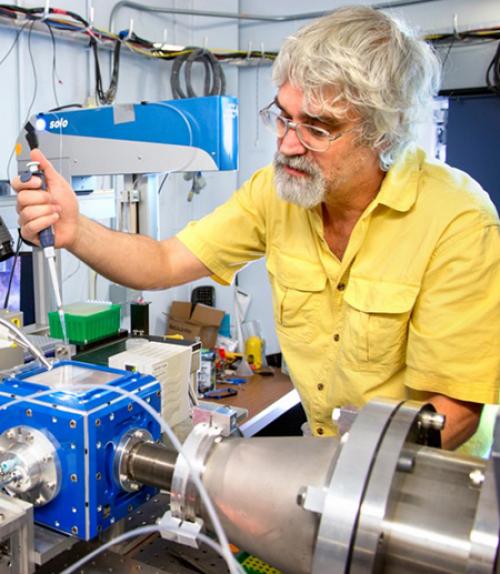A single human cell contains thousands of proteins that perform a vast array of functions, from fighting off viruses to transcribing DNA. By understanding the structure of these proteins, researchers can interpret their functions and develop methods for turning them on and off.
To understand these biological processes, researchers have been using the high-energy X-rays at the Cornell High Energy Synchrotron Source (CHESS). These intense beams of light are critical to solving the structure of these proteins, and the National Institutes of Health (NIH) will help ensure that this research continues.
On Aug. 15, the NIH awarded Cornell $17.4 million for MacCHESS (Macromolecular X-ray science at the Cornell High Energy Synchrotron Source), a subfacility of CHESS that attracts hundreds of biomedical researchers each year.
As part of its Empire State Development Division of Science, Technology and Innovation (NYSTAR) program to promote jobs in the state, New York state will augment the award with up to $2.5 million over the next five years.
By using the X-rays and emerging technology at MacCHESS, researchers are able to observe cellular functions and analyze molecular interactions, yielding important insights into the most fundamental biological processes. This research is critical to understanding antibiotic-resistant bacteria and the development of cancer-fighting drugs, for example.
“MacCHESS provides cutting-edge instrumentation and techniques to some of the most challenging questions confronting structural biologists,” said Rick Cerione, principal investigator for MacCHESS. “We are excited about working at the frontiers of structural biology to develop new technology that will provide long-term benefits to the biomedical research community as a whole.”
Two experiment stations at MacCHESS are supported by this funding: the Flexible Protein Crystallography beamline (FlexX); and the Biological Small Angle X-ray Solution Scattering and High-Pressure Biology beamline (BioSAXS/HP-Bio).
Researchers at the FlexX beamline will broadly focus on macromolecular crystallography (MX) and related methods that help determine the structures of proteins, viruses and nucleic acids, offering high-resolution 3D imaging that is needed for applications such as drug design.
The BioSAXS/HP-Bio beamline will support researchers studying biomolecular structures in solution; high-pressure studies in biophysics; the structural biology of organisms living under high pressure and temperature (known as “deep life”); and food science. This beamline also will help researchers working on improved sterilization and processing methods in the food and pharmaceutical industries.
CHESS recently completed a $15 million upgrade, solidifying the lab’s standing as a world-leading X-ray source. Earlier this year, Lt. Gov. Kathy Hochul came to CHESS to celebrate the successful completion of the upgrade, which was funded by New York state through the Upstate Revitalization Initiative.
With this award, the NIH joins the NSF as a major contributing partner for user operations at CHESS. The NSF is funding the Center for High-Energy X-Ray Sciences at CHESS, or CHEXS, which consists of four beamlines and staff to support high-energy X-ray science user operations, X-ray technology research and development, and CHEXS leadership.
Rick Ryan is a science communicator for the Cornell Laboratory for Accelerator-Based Science and Education.





